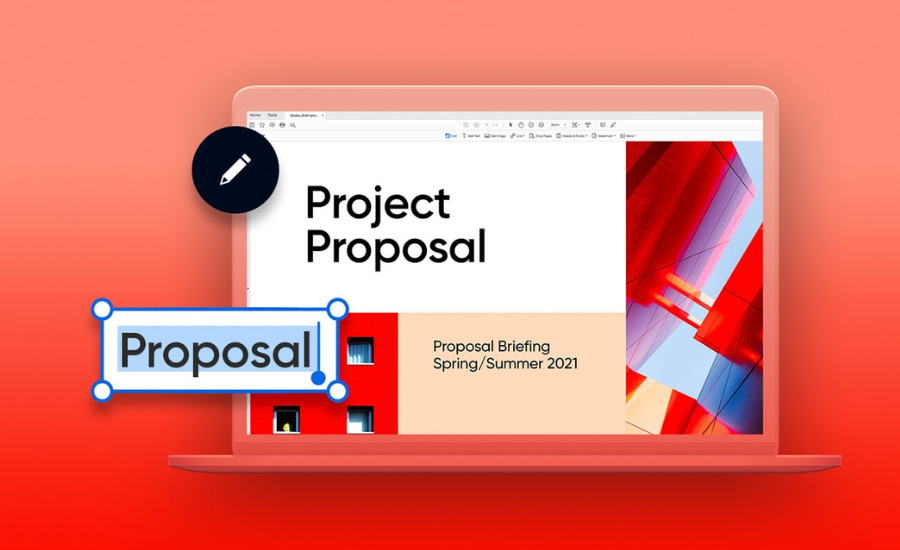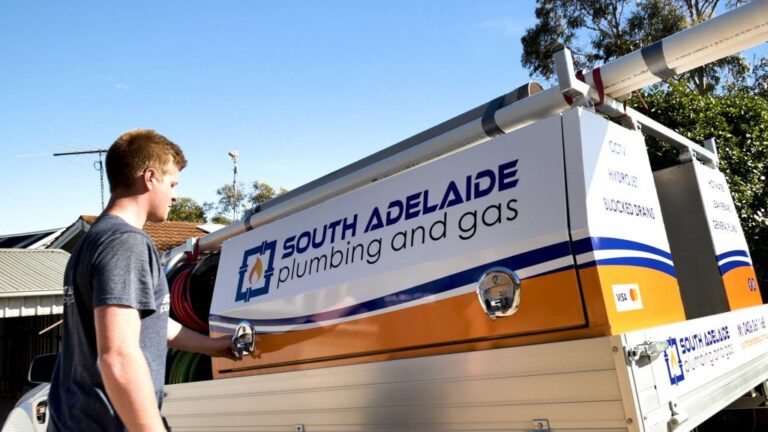
A project proposal is a document that outlines a proposed project or initiative and provides the necessary details to stakeholders, including sponsors, clients, and team members. The proposal typically includes information such as the project goals, objectives, scope, timeline, budget, and resources required. The purpose of a project proposal is to convince stakeholders that the proposed project is worthwhile and feasible and to secure funding or approval to move forward with the project. A well-written project proposal can help ensure that the project is aligned with stakeholder expectations, minimize potential risks, and increase the chances of project success.
Format of a proposal
The format of a project proposal may vary depending on the requirements of the organization or the specific project, but here is a general outline that can be followed:
- Title page: The title page should include the name of the project, the name of the organization submitting the proposal, and the date of submission.
- Executive summary: This section provides a brief overview of the project, including the project goals, objectives, and key deliverables.
- Introduction: This section provides background information about the project, including the problem or opportunity the project addresses and why it is important.
- Project goals and objectives: This section outlines the overall goals and objectives of the project.
- Scope of work: This section defines the scope of the project, including the specific activities and tasks that will be completed.
- Timeline: This section outlines the project timeline, including key milestones and deadlines.
- Budget: This section details the estimated costs of the project, including any resources or equipment required.
- Project team: This section provides information about the project team members and their roles and responsibilities.
- Conclusion: This section summarizes the key points of the proposal and emphasizes the benefits of the proposed project.
- Appendices: This section includes any additional information or supporting documents that may be relevant to the proposal, such as project plans or technical specifications.
What is a good project proposal?
A good project proposal is one that effectively communicates the value and feasibility of a proposed project to stakeholders, including sponsors, clients, and team members. Here are some key characteristics of a good project proposal:
Clear and concise:
The proposal should be easy to read and understand, and should clearly outline the project goals, objectives, scope, timeline, budget, and resources required.
Focused:
The proposal should be focused on the key objectives of the project and avoid unnecessary details or information that may detract from the main message.
Well-structured:
The proposal should be organized and presented in a logical and coherent manner, with a clear introduction, body, and conclusion.
Evidence-based:
The proposal should be based on sound research and analysis, with supporting evidence and data to back up key claims and assumptions.
Realistic:
The proposal should be realistic in terms of the project scope, timeline, budget, and resources required, and should address any potential risks or challenges.
Persuasive:
The proposal should be persuasive and compelling, emphasizing the benefits and value of the proposed project and addressing any concerns or objections that stakeholders may have.
Professional:
The proposal should be professional in appearance and tone, with proper formatting, grammar, and spelling, and should follow any guidelines or requirements provided by the organization.
What are the steps in proposal writing?
The steps in proposal writing may vary depending on the requirements of the organization or the specific project, but here is a general outline that can be followed:
- Understand the project requirements: Before you begin writing the proposal, it’s important to fully understand the project requirements and the needs of the stakeholders involved.
- Research the project: Conduct research to gather information about the project, including any relevant data, statistics, or best practices.
- Define the project scope: Clearly define the scope of the project, including the goals, objectives, and expected outcomes.
- Develop a project plan: Develop a detailed project plan, including the timeline, budget, and resources required.
- Write the proposal: Using the format outlined in the proposal, write a clear and concise proposal that effectively communicates the value and feasibility of the project.
- Review and edit the proposal: Review and edit the proposal to ensure that it is well-structured, evidence-based, and persuasive.
- Submit the proposal: Once it is finalized, submit it to the appropriate stakeholders for review and approval.
- Follow up: After submitting the proposal, follow up with stakeholders to ensure that any questions or concerns are addressed, and to keep them informed of the project status.
Types of Project Proposals
There are various types of project proposals that may be required depending on the context and the requirements of the organization. Here are some common types of project proposals:
Formally solicited proposal:
A formally solicited proposal is a response to a specific request for proposals (RFP) issued by an organization, in which they outline the requirements for a specific project and invite proposals from potential vendors or contractors.
Informal unsolicited proposal:
An informal unsolicited proposal is a proposal that is submitted to an organization without a specific request or invitation, often as a way to introduce a new idea or solution.
Continuation proposal:
A continuation proposal is a proposal that seeks to continue or extend an existing project, often with modifications or adjustments to the original scope or objectives.
Supplemental proposal:
A supplemental proposal is a proposal that seeks to add additional resources or support to an existing project, such as additional funding or personnel.
Internal proposal:
An internal proposal is a proposal that is submitted within an organization, often to request additional resources or support for a specific project.
Grant proposal:
A grant proposal is a proposal that is submitted to a funding agency or organization, typically in the non-profit sector, in order to secure funding for a specific project or program.
Write a student project proposal
Here’s a sample student project proposal:
Title: Improving Campus Sustainability: A Green Roof Project
Introduction:
Our university has committed to achieving carbon neutrality by 2030 and has already made significant progress towards this goal. However, there is still much work to be done to reduce our environmental impact. Our project aims to contribute to this effort by installing a green roof on one of the campus buildings.
Objectives:
The objectives of this project are:
- To reduce energy consumption and carbon emissions on campus by improving building insulation and reducing the urban heat island effect.
- To create a habitat for wildlife and promote biodiversity on campus.
- To raise awareness about the importance of sustainable practices and the benefits of green infrastructure.
Methodology:
The project will involve the following steps:
- Site selection: We will identify a suitable building on campus for the green roof installation, considering factors such as building structure, accessibility, and sun exposure.
- Design and planning: We will work with a professional green roof designer to create a detailed design plan for the installation, including the selection of appropriate plants, materials, and irrigation systems.
- Fundraising and budgeting: We will explore funding options and develop a detailed budget for the project, including the cost of materials, labor, and ongoing maintenance.
- Implementation: We will work with a professional roofing contractor to install the green roof according to the design plan.
- Monitoring and evaluation: We will monitor the performance of the green roof over time and evaluate its impact on energy consumption, biodiversity, and public awareness.
Expected outcomes:
We expect the following outcomes from this project:
- A reduction in energy consumption and carbon emissions on campus, resulting in cost savings for the university and a smaller environmental footprint.
- An increase in biodiversity and habitat creation on campus, promoting ecological sustainability.
- Greater awareness among students and the community about the benefits of green infrastructure and the importance of sustainable practices.
Write a project proposal for funding
Here’s a sample project proposal for funding:
Title: Community Garden and Food Security Project
Introduction:
Our community has a significant need for increased access to fresh, healthy food. In order to address this need, we propose a community garden and food security project that will empower residents to grow their own food and create a more sustainable and resilient local food system.
Objectives:
The objectives of this project are:
- To increase access to fresh, healthy food for low-income and food-insecure residents in our community.
- To promote community engagement and social cohesion through shared gardening activities.
- To reduce the environmental impact of food production and transportation by promoting local, sustainable agriculture.
Methodology:
The project will involve the following steps:
Site selection and preparation:
We will identify a suitable location for the community garden, considering factors such as sunlight, soil quality, and accessibility. We will also prepare the site by removing any debris, tilling the soil, and constructing raised garden beds as needed.
Gardening workshops and outreach:
We will host a series of workshops and events to engage residents in the project, provide gardening education and training, and distribute seeds and other gardening supplies.
Garden maintenance and management:
We will establish a volunteer-led garden committee to manage the day-to-day operations of the garden, including maintenance, irrigation, and pest control.
Harvesting and distribution:
We will coordinate the harvest of fresh produce from the garden and distribute it to low-income and food-insecure residents through community organizations and local food banks.
Monitoring and evaluation:
We will monitor the performance of the community garden over time and evaluate its impact on food security, community engagement, and environmental sustainability.
Expected outcomes:
We expect the following outcomes from this project:
- Increased access to fresh, healthy food for low-income and food-insecure residents in our community, promoting improved health outcomes and food security.
- Greater community engagement and social cohesion through shared gardening activities, promoting a sense of community ownership and pride.
- Reduced environmental impact of food production and transportation through the promotion of local, sustainable agriculture.
Budget:
The total budget for this project is $25,000. The budget includes the following expenses:
- Site preparation and construction: $5,000
- Gardening workshops and outreach: $3,000
- Garden maintenance and management: $10,000
- Harvesting and distribution: $5,000
- Monitoring and evaluation: $2,000
Conclusion:
This community garden and food security project has the potential to make a significant impact on the health and well-being of residents in our community, while also promoting social cohesion and environmental sustainability. We believe that this project is a worthwhile investment in the future of our community and we are committed to its success.
Project proposal example for the community
Here’s an example of a project proposal for a community project:
Title: Community Green Space Project
Introduction:
Our community lacks accessible green space, which has a negative impact on the health and well-being of residents. This project proposes the creation of a community green space that will provide a safe and welcoming environment for residents to enjoy nature and engage in physical activity.
Objectives:
The objectives of this project are:
- To provide a safe and accessible green space for community members to enjoy nature and engage in physical activity.
- To promote community engagement and social cohesion through shared green space activities.
- To improve the aesthetic value of the community and promote environmental sustainability.
Methodology:
The project will involve the following steps:
Site selection and preparation:
We will identify a suitable location for the community green space, considering factors such as accessibility, size, and proximity to residential areas. We will also prepare the site by removing any debris, leveling the land, and planting grass and trees as needed.
Amenities and infrastructure:
We will install amenities such as benches, picnic tables, and trash cans, as well as lighting and fencing for security and safety.
Community engagement and programming:
We will host a series of events and activities to engage residents in the project, such as outdoor movie nights, fitness classes, and gardening workshops.
Maintenance and management:
We will establish a volunteer-led green space committee to manage the day-to-day operations of the space, including maintenance, upkeep, and security.
Monitoring and evaluation:
We will monitor the usage and impact of the green space over time and evaluate its impact on community engagement, social cohesion, and environmental sustainability.
Expected outcomes:
We expect the following outcomes from this project:
- Improved health and well-being of community members through increased access to green space and opportunities for physical activity.
- Greater community engagement and social cohesion through shared green space activities, promoting a sense of community ownership and pride.
- Improved aesthetic value of the community through the creation of a beautiful and welcoming green space.
- Improved environmental sustainability through the planting of trees and promotion of green infrastructure.
Budget:
The total budget for this project is $30,000. The budget includes the following expenses:
- Site preparation and infrastructure: $10,000
- Amenities and programming: $10,000
- Maintenance and management: $7,000
- Monitoring and evaluation: $3,000
Faqs
Here are some frequently asked questions about project proposals:
Q.1 What is a project proposal?
A project proposal is a document that outlines a plan for a specific project, including its objectives, methodology, expected outcomes, and budget. It is used to secure funding or support for the project.
Q.2 What should be included in a project proposal?
A project proposal should include an introduction, objectives, methodology, expected outcomes, budget, and conclusion. It should also include any supporting materials such as research data, letters of support, or resumes of key personnel.
Q.3 Who is the target audience for a project proposal?
The target audience for a project proposal depends on the purpose of the proposal. It may be a funding agency, a government agency, a community organization, or any other potential supporter of the project.
Q.4 How long should a project proposal be?
The length of a project proposal can vary depending on the project’s complexity and the target audience’s requirements. However, most project proposals should be between 5-20 pages.
Q.5 How do I make my project proposal stand out?
To make your project proposal stand out, it is important to be clear and concise in your writing, highlight the unique aspects of your project, and provide supporting data and evidence to back up your proposal. It is also important to tailor your proposal to the specific needs and interests of your target audience.
Conclusion
In conclusion, a project proposal is a critical document for securing funding and support for a specific project. It outlines the objectives, methodology, expected outcomes, and budget for the project and should be tailored to the needs and interests of the target audience. There are different types of project proposals, including student project proposals, funding proposals, and community project proposals, each with its own unique requirements. By following the steps in proposal writing, including careful planning, research, and clear and concise writing, you can create a project proposal that stands out and effectively communicates the value and impact of your project.



